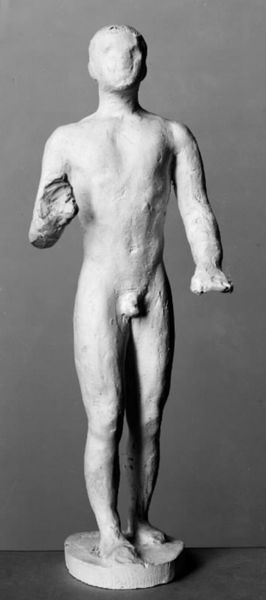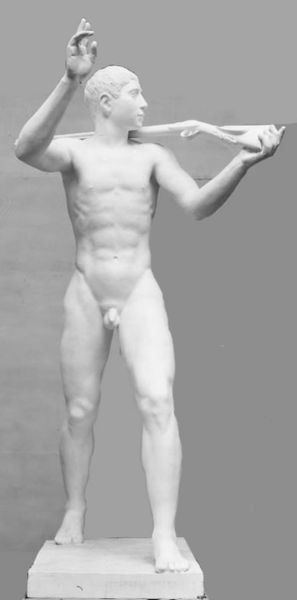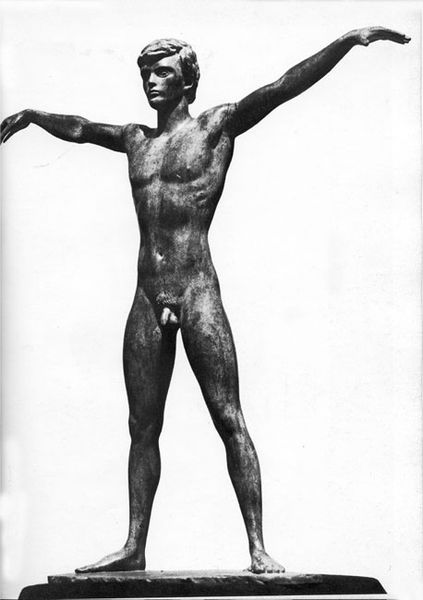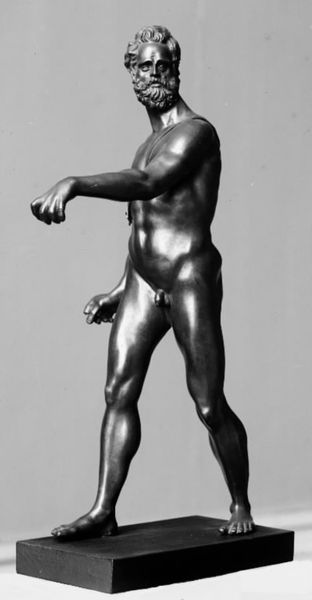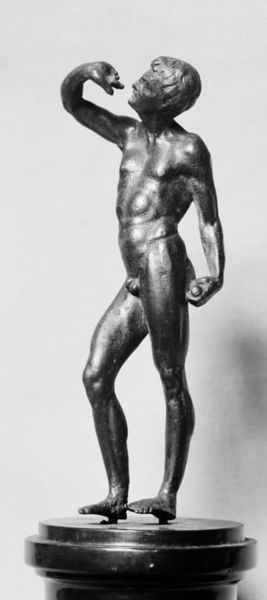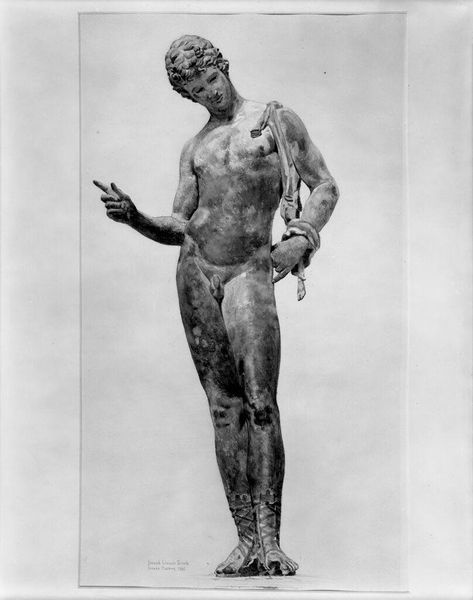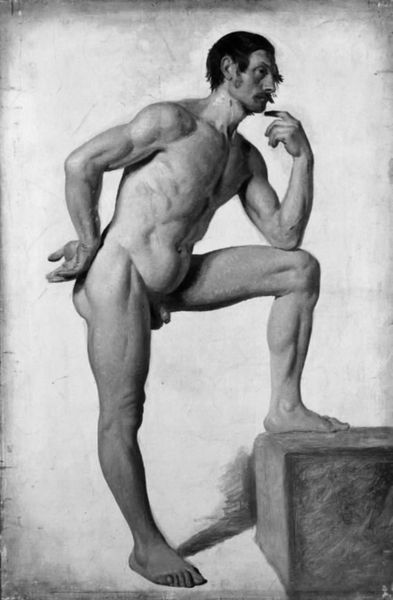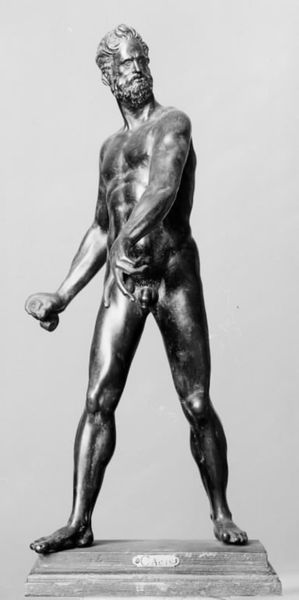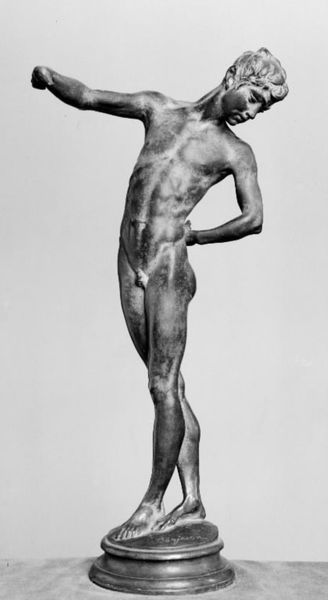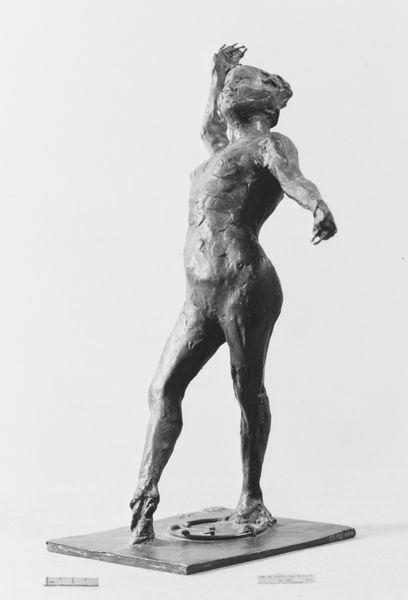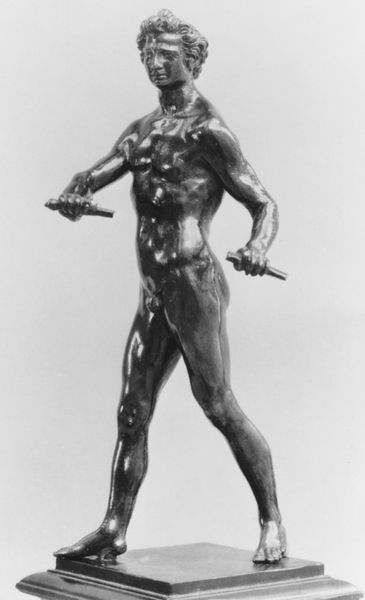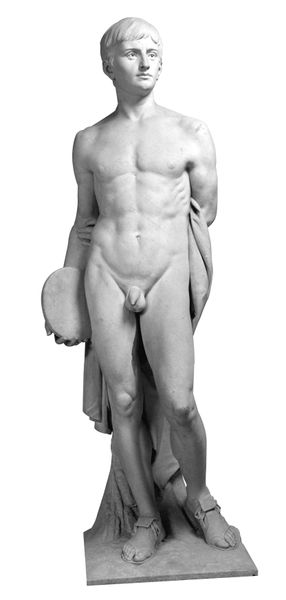
David, idet han slynger stenen mod Goliath. Stående nøgen med slyngen liggende ved sine fødder 1875
0:00
0:00
bronze, sculpture
#
portrait
#
sculpture
#
classical-realism
#
bronze
#
figuration
#
sculpture
#
history-painting
#
nude
Dimensions: 180.3 cm (height) x 66.5 cm (width) x 102 cm (depth) (Netto)
Curator: Here we have August Saabye’s bronze sculpture from 1875, "David, idet han slynger stenen mod Goliath. Stående nøgen med slyngen liggende ved sine fødder" – David, the moment he slings the stone at Goliath. Standing nude with the sling lying at his feet. Editor: It strikes me immediately as a work suspended in anticipation. A powerful tension emanates from the stillness. There's almost a defiance in the figure's expression. Curator: Yes, the piece embodies that pre-action calm, but Saabye renders David’s form in a rather traditional, almost idealized, heroic nude. The contrapposto stance, the considered placement of limbs... it adheres to classical principles of balance and beauty. Editor: And there's a complexity there because this hyper-idealized form becomes a stand-in for Denmark, made during a moment of great unease. The Danish defeat in 1864 at the hands of Prussia loomed large when this piece was made. Curator: Interesting, so this becomes an allegory? Editor: Absolutely. Think about it. David, the underdog, about to fell the giant Goliath, is more than a biblical subject; he is a metaphor for Denmark hoping to reassert itself on the world stage. A nude body made heroic becomes about projecting a specific kind of power. I can see how in a particular social-political moment it became charged. It suggests how art acts in moments of crisis, offering a renewed symbolic language for the culture at stake. Curator: From a purely sculptural standpoint, the figure's musculature, the articulation of the joints, and the texture of the hair are all expertly handled, serving to embody an enduring heroic archetype. Editor: True, Saabye certainly demonstrates a mastery of the craft, reflecting his formal training. But its appeal lies beyond technical skill. For many in that period, seeing this classical depiction would signal not only art-historical mastery but also the hope of overcoming adversity. Curator: Looking at the statue, I now see that David transcends the mere portrayal of a biblical story. The artwork is more about encapsulating something timeless about resilience itself, don’t you think? Editor: I'm seeing it differently now, understanding it in both classical terms, but also how it's entangled with its own complicated historical moment.
Comments
No comments
Be the first to comment and join the conversation on the ultimate creative platform.
